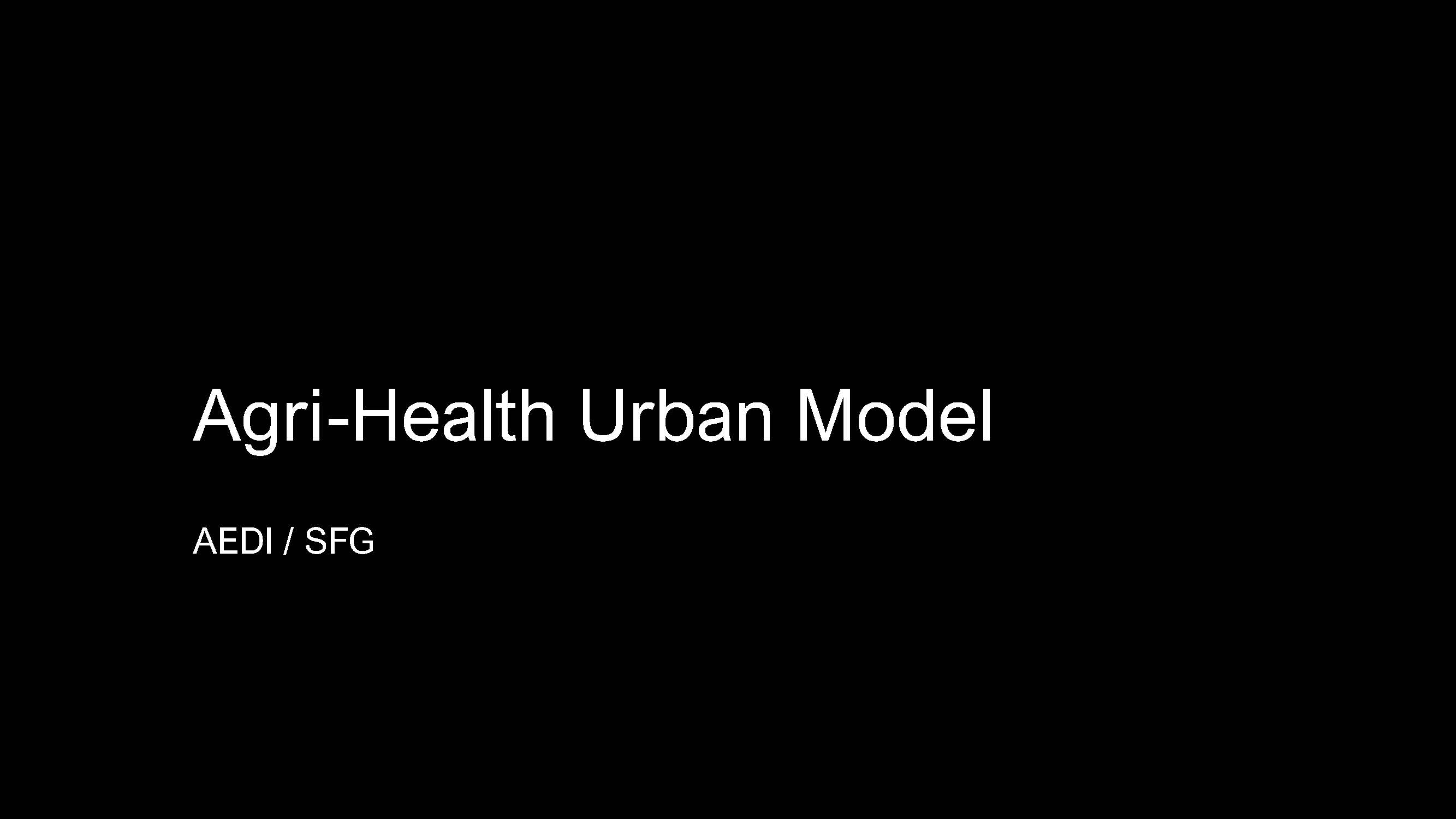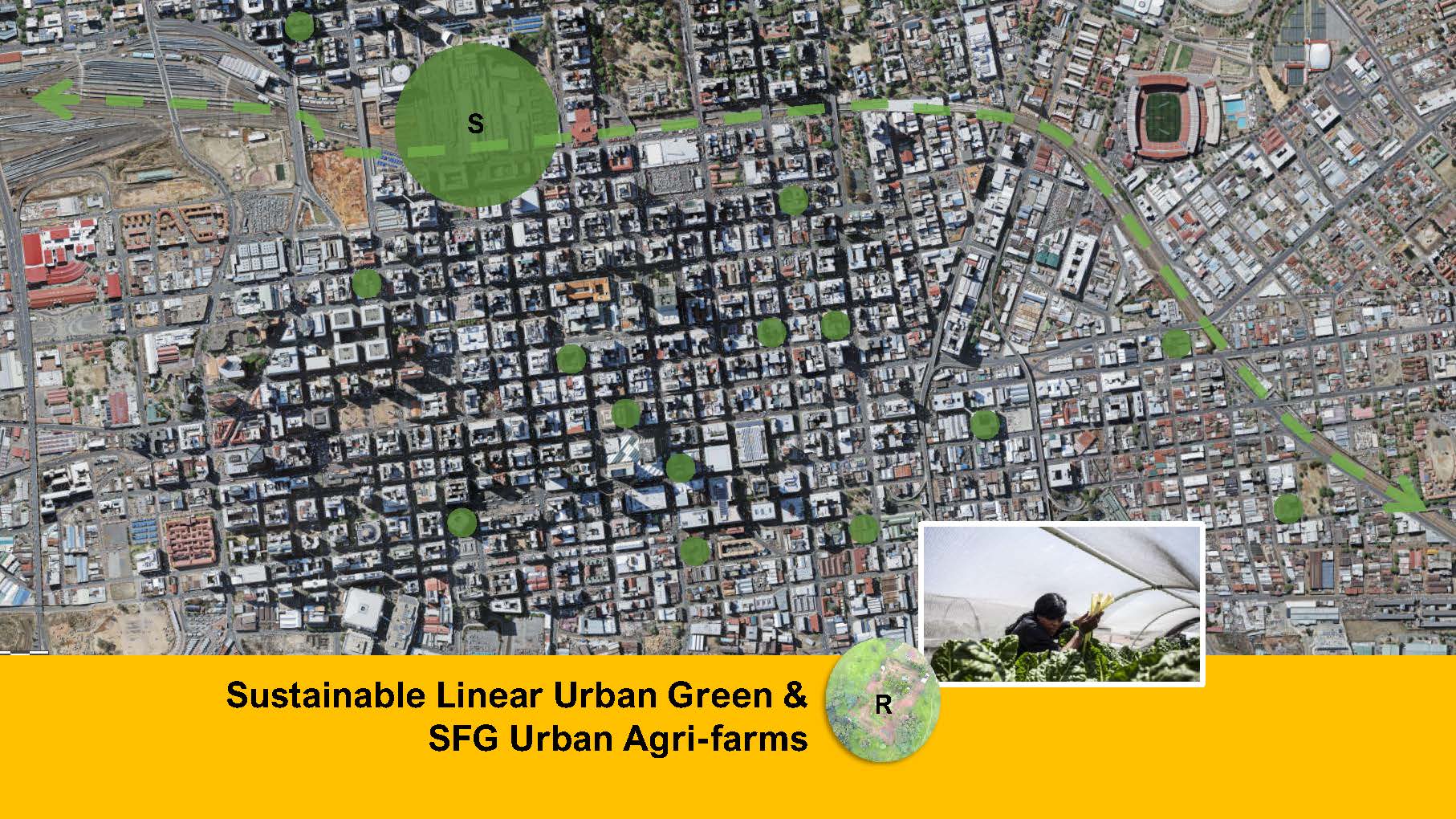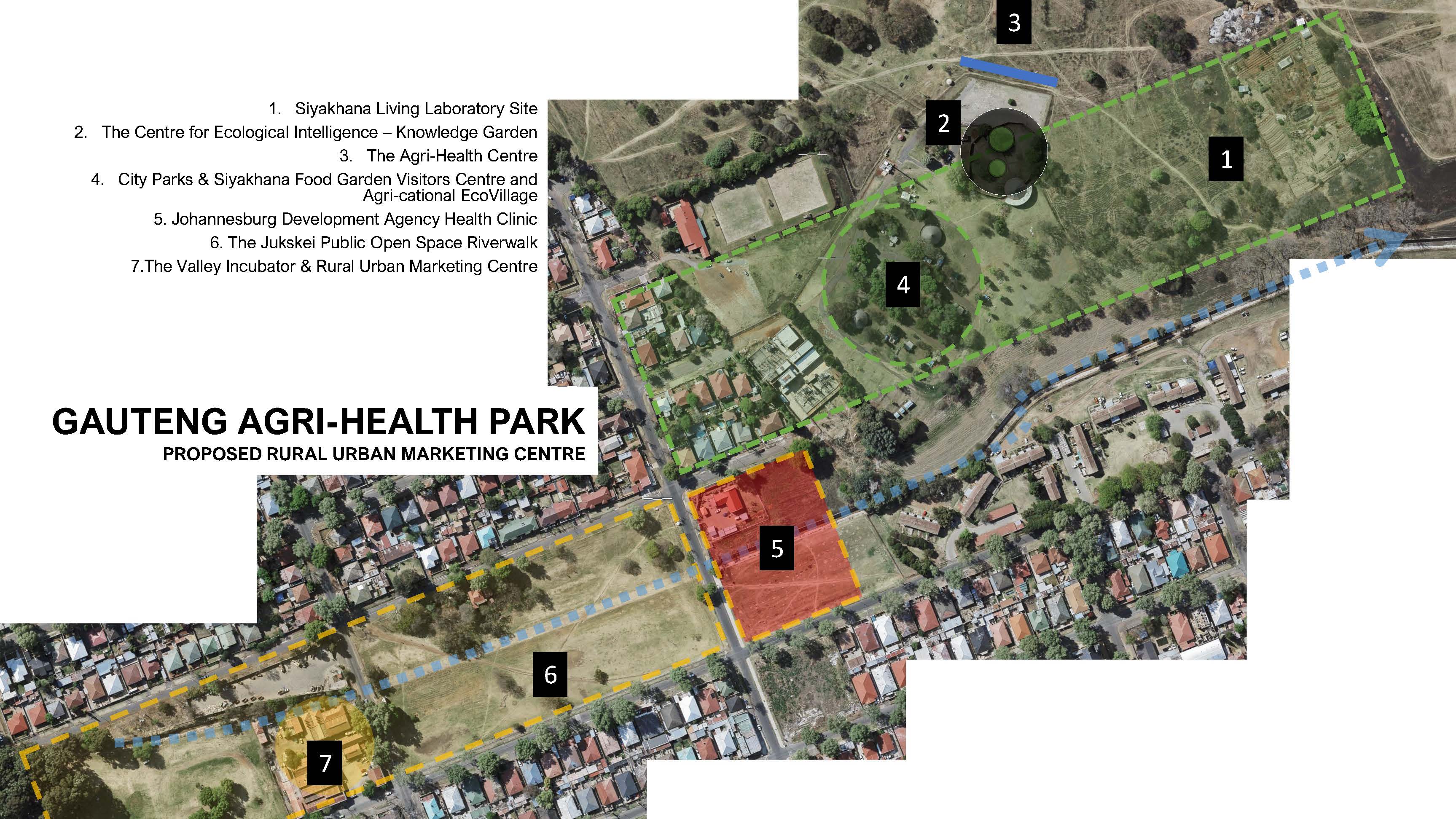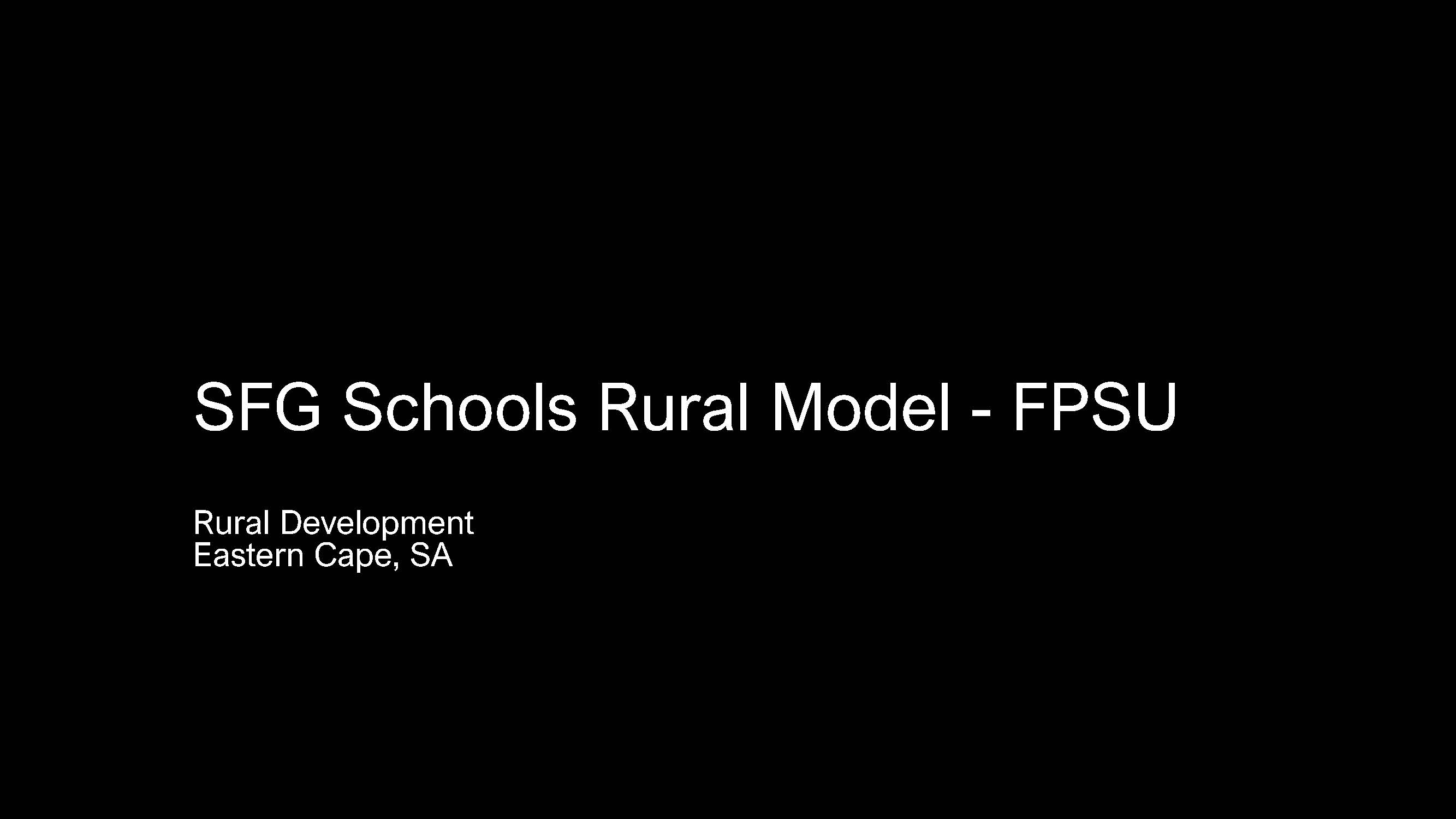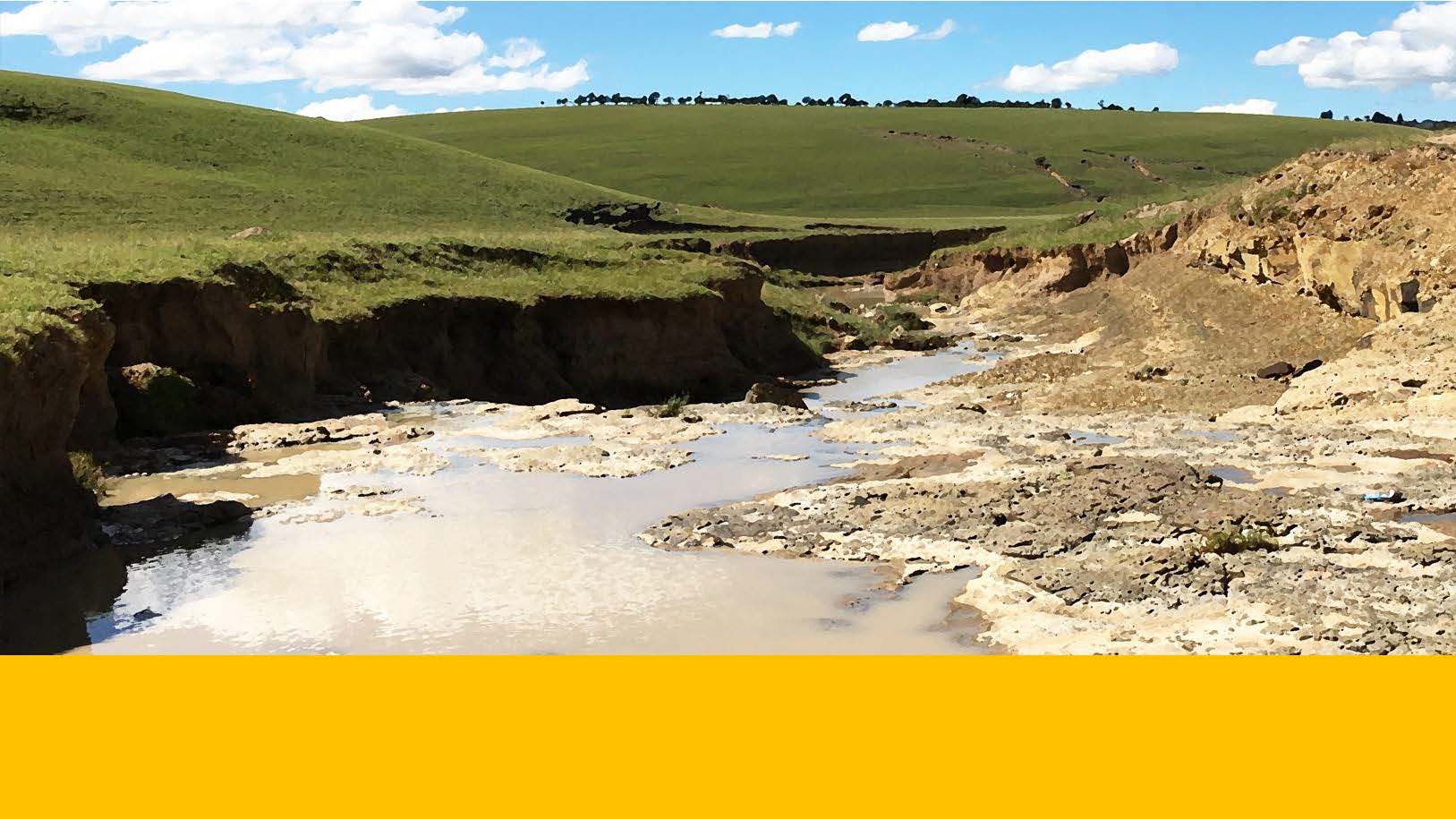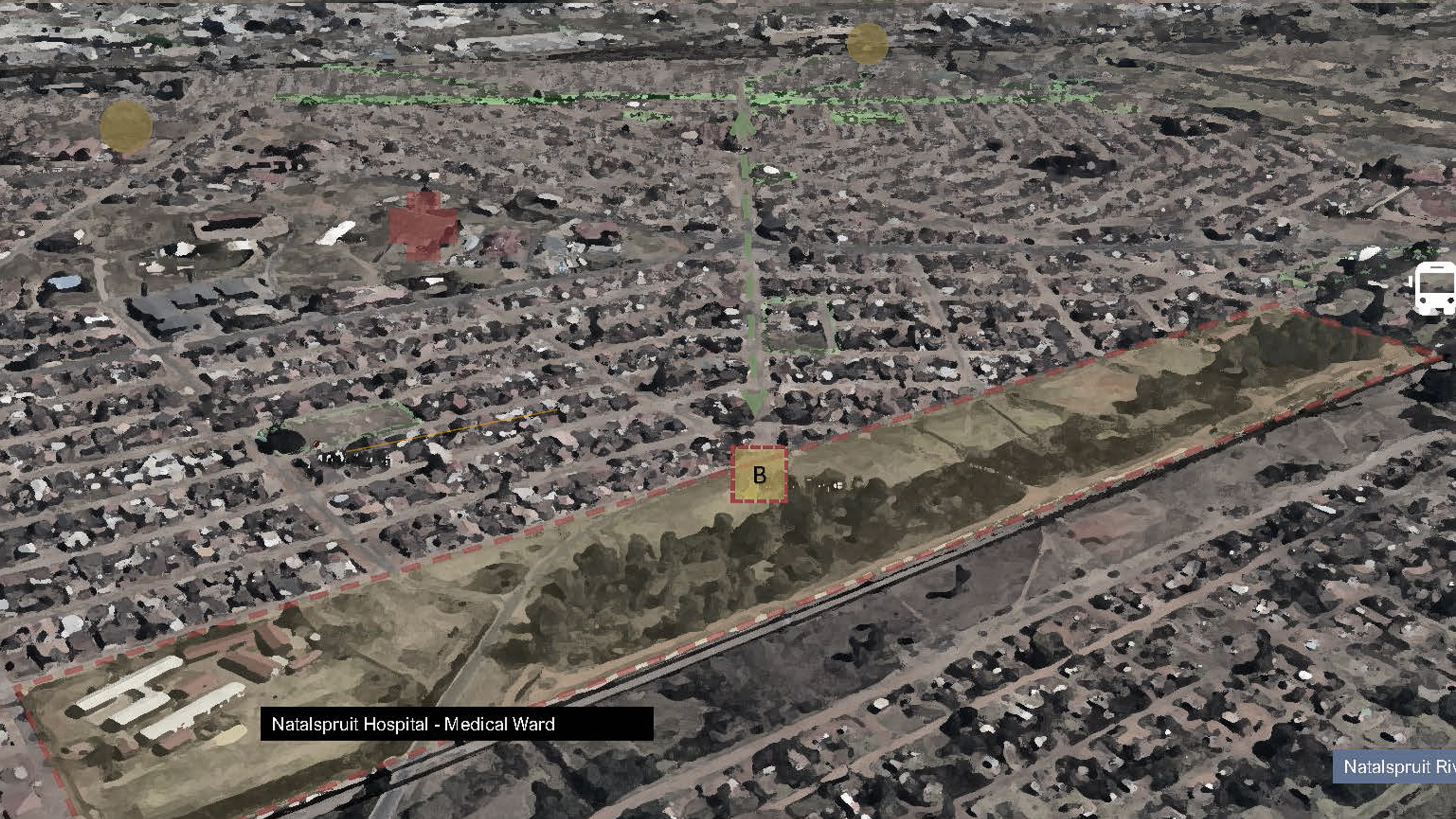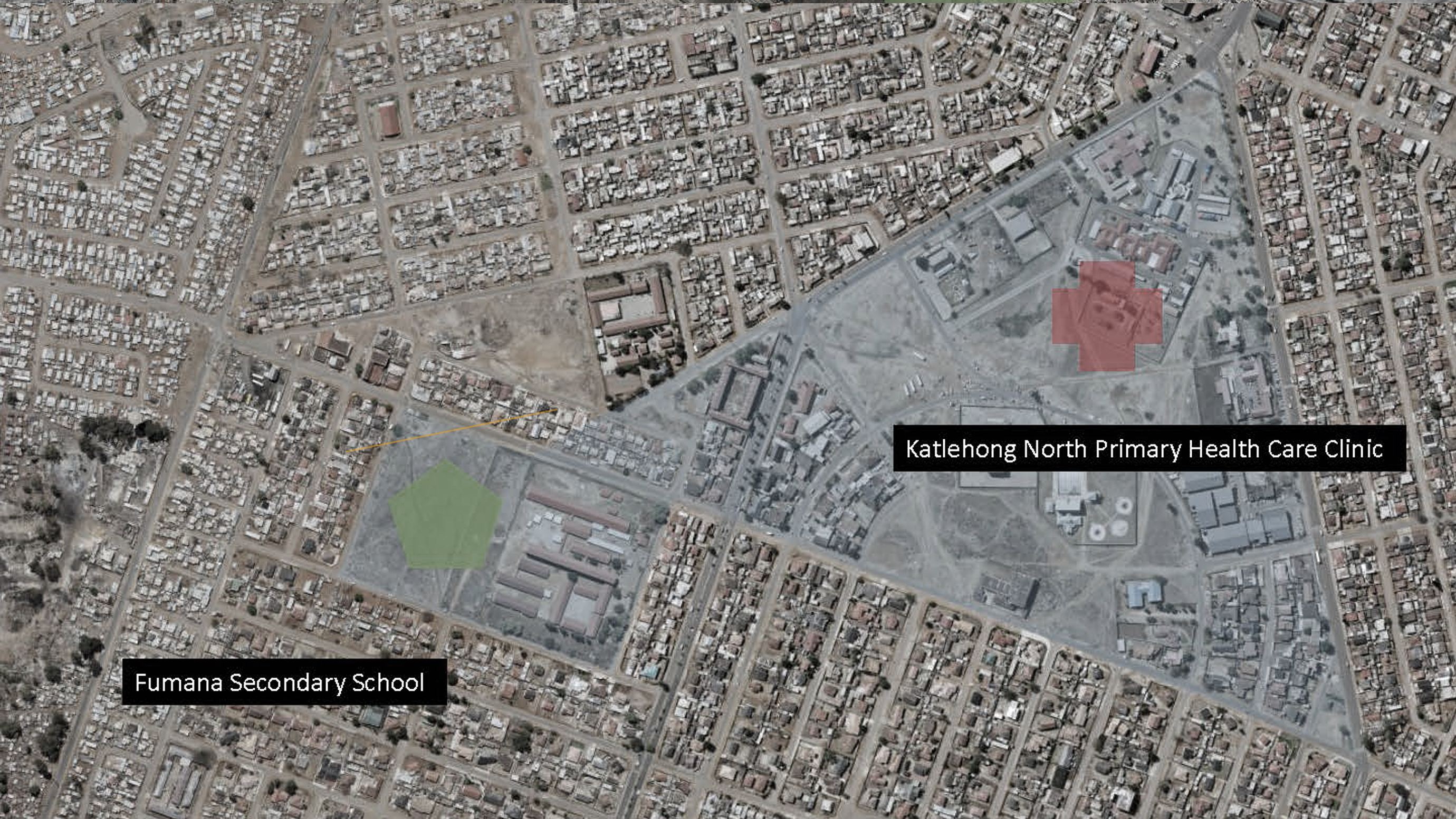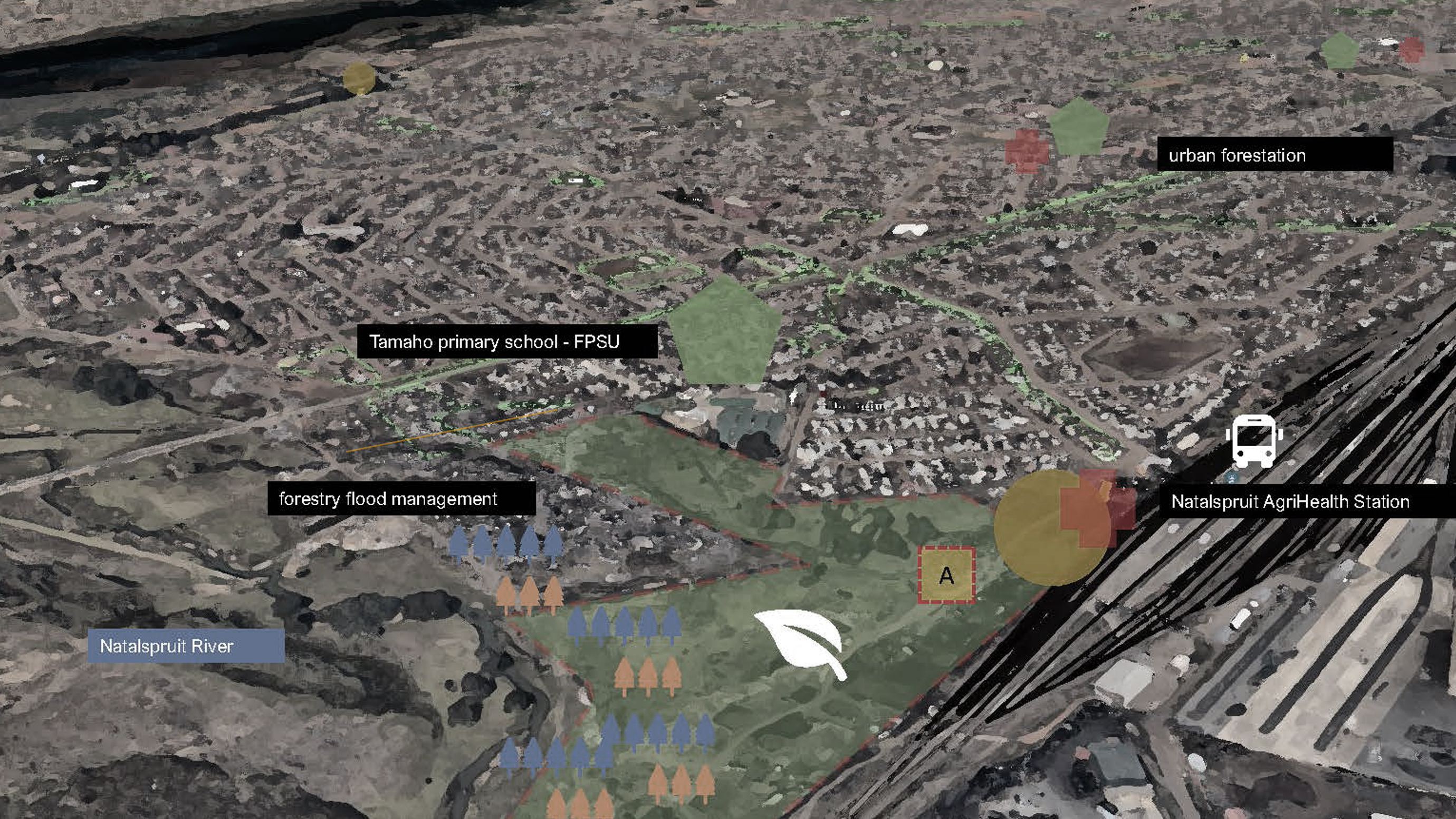3N MODEL
AEDI
University of Johannesburg
Siyakhana Food Gardens
AEDI
University of Johannesburg
Siyakhana Food Gardens
Nourish, Nurture, Network (3N): A systemic approach using agroecology for resilient futures in marginalised communities in Southern Africa. A systemic framework for scalable agroecological enterprises (Nourish), riparian ecological infrastructure restoration (Nurture), and active community engagement through learning, institutional partnerships, transdisciplinary approaches, ICT systems, and M&E (Network) implemented through eight structured work packages to address poverty, climate adaptation, food and nutrition security and small enterprises, focusing on women and youth.
Co-authored Dr Jessica Thorn, Dieter Brandt, Michael Rudolph, and University of Johannesburg.
Co-authored Dr Jessica Thorn, Dieter Brandt, Michael Rudolph, and University of Johannesburg.



Fig. The Gauteng Basin is a geological formation that stretches between Johannesburg and Pretoria. It contains one of the world's largest gold reefs, which was discovered in 1886. The reef arc, as it's called, splits the basin flows north to the Vaal boundary and southern flows towards the Magaliesberg.
Nourish, Nurture, Network (3N): A systemic approach using agroecology for resilient futures in marginalised communities in Southern Africa
The overarching novel Nourish, Nurture, Network (3N) framework for sustainable food systems and agricultural value chain, production and environmental stewardship targets marginalized communities in Southern Africa. We will upskill and support households and community-based farming enterprises to accelerate agricultural transformation from subsistence to viable commercial entities, promote green growth through environmental stewardship and support smallholder and households to adequately produce their own food, enhance nutrition and promote food security, now and in the future.
Our approach is based on transformative and integrative agroecological practice which offers the kinds of innovations needed to increase soil fertility, raise productivity, improve food and nutrition security, support healthy livelihoods, and build climate resilience. Systems thinking and a spatially-integrated landscape approach across riparian systems is used to address challenges at the intersection of the Water Energy Food nexus. Socio-economic development in marginalized populations will be enhanced through beneficiary-led bottom-up approaches supported by entrepreneurial expertise, thus creating business stewardship models around equitable, inclusive value chain participation.
Our 3N framework has been successfully applied in southern Africa and can be scaled for sustainable and effective transformation of people and landscapes. As change agents, we promote active engagement and involvement with and by communities and organizations and other key stakeholders. We will implement our projects through eight structured work packages. With a focus on women and youth, the adaptive model enables communities to set up food gardens, eco bee systems, vegetable drying, agricultural markets hubs and agro-processing centres and restore ecological infrastructure.






Fig. 3N is an integrated water management approach that uses the natural and built environment to support sustainable settlements on the Johannesburg reef. A series of river systems network satellite settlements across the reef, enhancing aquifer, river and reservoir renewability and filtration while also regulating flood risk. Nurturing settlements through sustainable small to medium enterprises in settlements and establishing urban green infrastructure programmes to rehabilitate ecological infrastructure along riparian corridors are all goals of 3N.
There is an awakening of agriculture’s potential to stimulate economic growth and transform poverty for sustainable futures in sub-Saharan Africa (SSA). Agriculture accounts for a sizable contribution to SSA’s GDP, and the UNFAO estimates gains in agricultural production alone could lift hundreds of millions of people out of hunger.
However, pressures of climate variability and change, population growth, urbanisation, and COVID-19 limits SSA’s production and economic growth. Furthermore, the agricultural sector is deterred by a pervasive gender yield gap. Female farmers account for about 40% of SSA’s agricultural workforce, yet produce 20-30% less than their male counterparts, in part due to cultural restrictions, and a lack of access to training, resources and markets1.
Persistent food insecurity across SSA is associated with the complex interaction of hunger, micronutrient deficiency, declining household food supplies, limited fruit and vegetable consumption, increased participation in food assistance programmes/social welfare and eating disorders and non- communicable diseases, rising gap between formal/informal food and health systems, privatization of irrigation water, and economic recession.
Concurrent declining crop yields are largely attributed to growing water scarcity, biodiversity loss, habitat fragmentation, soil quality decline, overharvesting, continuous cropping, indiscriminate use of agrochemicals, deforestation, and pollution. Environmental migration intersects with burgeoning informal settlements on city margins where residents are exposed to poor living/ working conditions, rising inequality, limited water/sanitation access, hazards, often exacerbating ecosystem degradation.
These problems are further compounded by unreliable energy sources for refrigeration and cooking, limited market access, greater reliance on imported foods and the growing monopolies of global agribusiness corporations. Despite novel technologies and well-known approaches to enhance food system sustainability, ineffective governance and strategic foresight, poor implementation, political instability, uncoordinated interventions, and outdated infrastructure, prevent solutions from reaching the most vulnerable. As such, smallholder farmers and peri-urban residents are increasingly excluded from value chains, economic transformation and food self-sufficiency. Women, youth and children are most affected (2).
Previous interventions at country-level that aim to address these wicked problems, deliver functionality rather than ownership, lack systemic approaches to facilitate social-ecological resilience, lack interventions across sustainable value chains emphasizing inclusivity and health, nor address challenges applying multi-disciplinary, multi-sectoral approaches. While often framed as ‘green growth initiatives’, limited attention has been paid to biodiversity regeneration of ecosystems. Thus, outcomes and impact are limited, particularly with minimal real-life application to and engagement with the intended grassroots beneficiaries whose quality of life index is low and vulnerability to global environmental degradation is high.
1 http://www.fao.org/news/story/en/item/52011/icode/
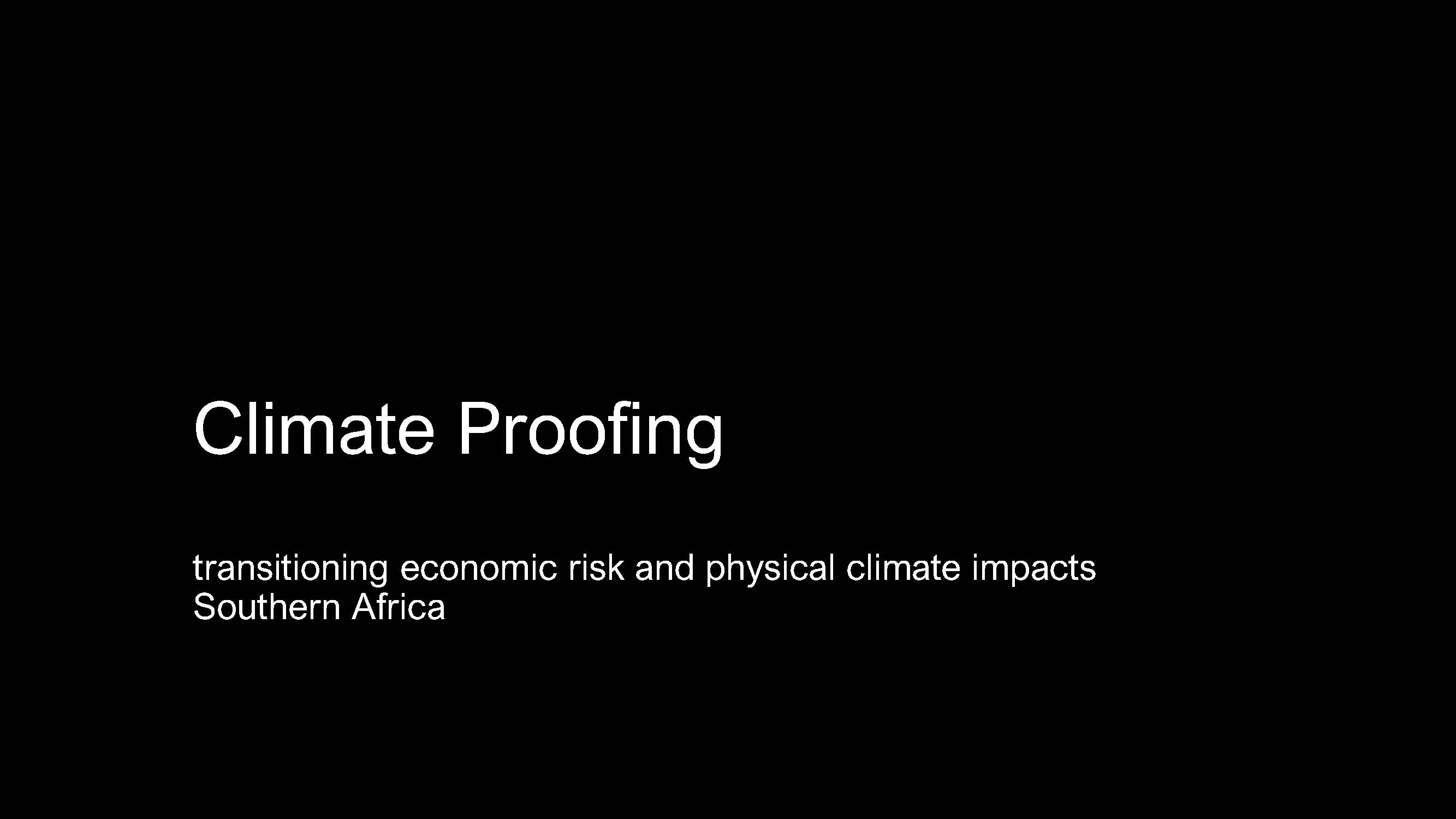
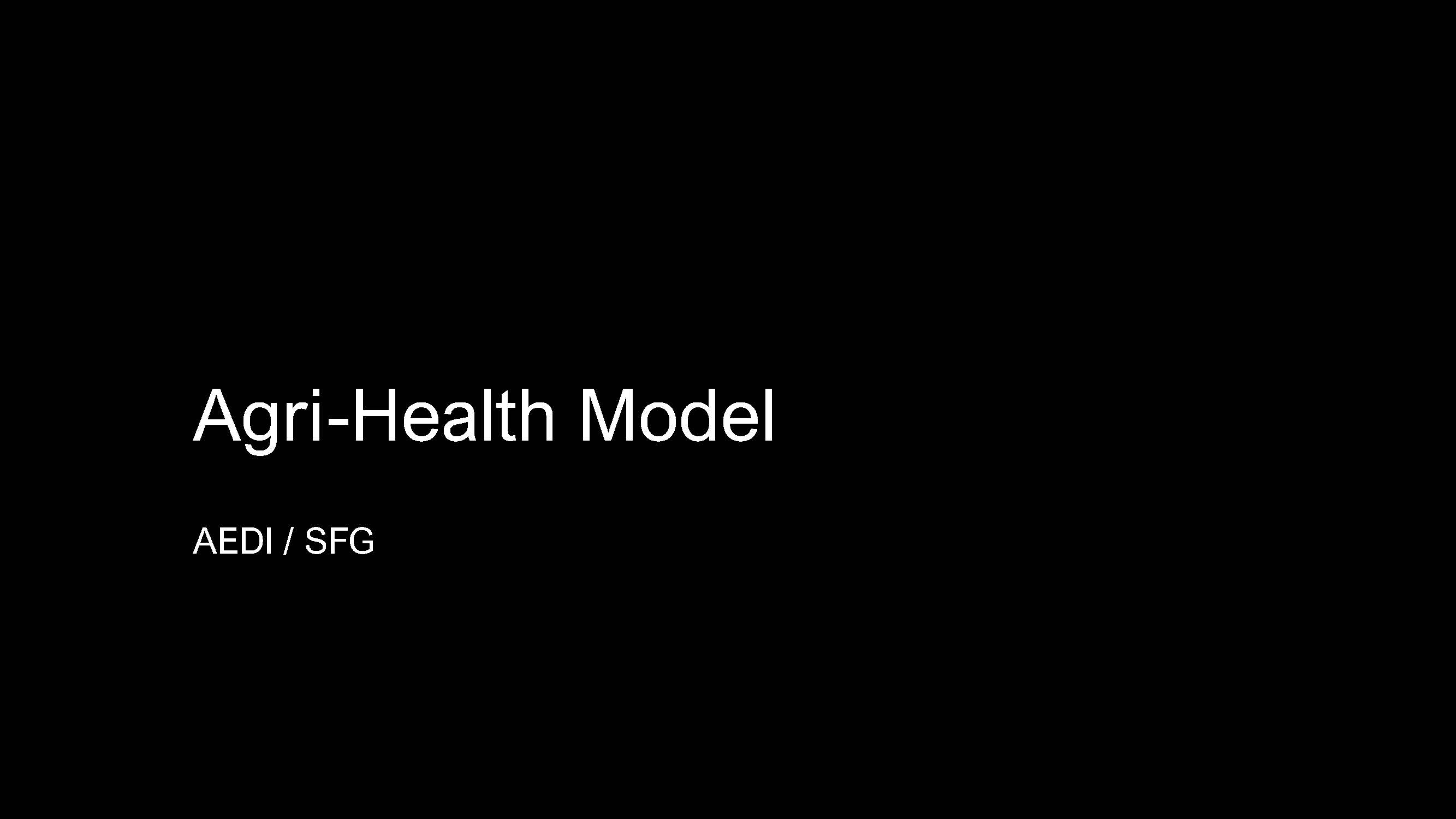






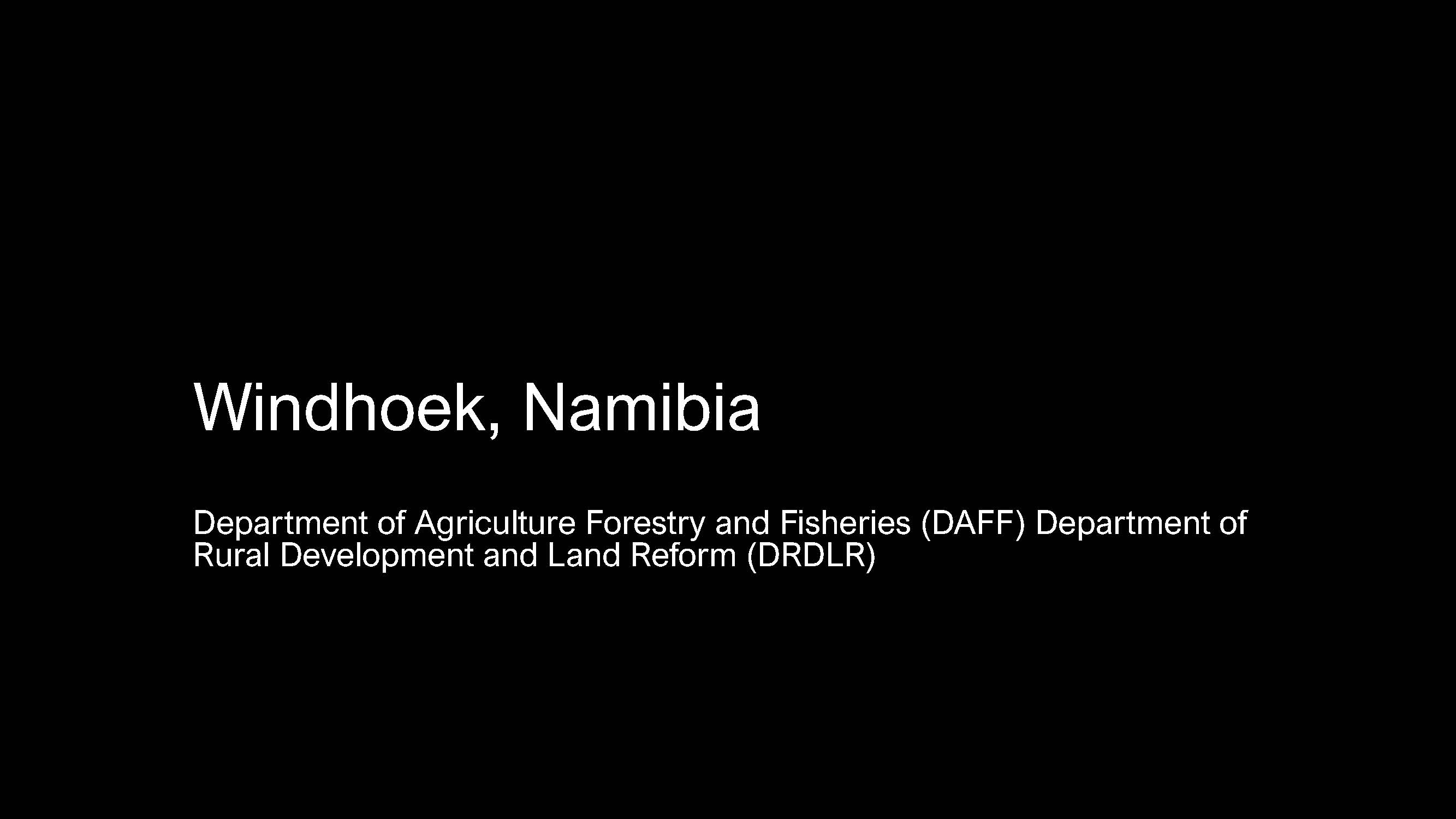
Our systemic 3N framework aims to leverage transformative change in environmental stewardship, food production and sovereignty, health and well-being, using a “One health” and the “Water Energy Food” nexus approach across selected riparian social-ecological systems.
Based on our research and implementation experience, the following levers will ensure success of the 3N framework:
-
Agroecology has proven to be less costly for smallholder farmers/households and has socio- economic and environ
mental benefits. 3N will emphasise sustainable micro-farming and green infrastructure.
-
3N will create an enabling environment to help shift smallholder food production systems from subsistence to commercial viability, while maintaining community ecosystem stewardship. We will close connections across agricultural value chains by linking smallholder farmers to commercial enterprises using farmer production support units, agri-incubators, and rural-urban market centres.
-
Fostering a circular agro-economic food system, we aim to eliminate waste and the continual use of resources.
-
Recognizing rural-urban linkages, environmental migration and urbanization, we will work with rural and peri-urban communities, because they are highly exposed to food, climate and water insecurity , resulting in a low quality of life index, yet are most likely to benefit from the uptake of conservation agriculture and climate resilience.
-
COVID-19 gives further impetus for this work, demonstrating rising fragility and inequality of target communities. The stormy upheavals COVID-19 pandemic will radically change our world, which is in great need of co-operation, co-joining and co-existence of resources and expertise
-
to which our project is committed. 3N will promote food self- sufficiency, climate resilience and health units attached to farmer production units.
-
We will connect upstream and downstream landscapes, focusing on river systems along income gradients in urban and rural nodes.
-
Through training, teaching, and mentoring we will establish supportive structures and adaptation pathways. These encourage applying and integrating new skills, knowledge and behaviour change in communities.
-
Partnerships will ensure sustainability, between higher educational institutions, governmental agencies (including mid- to senior-level government official ‘champions’ in Departments of Health, Education, Economic development, Agriculture and Forestry, Rural development and Land reform, water, environment, parks, disaster risk reduction or climate change) and importantly communities (households, cooperatives, schools, women’s groups and shackdwellers’ federations).
- The approach is participatory, creating of local partnerships, local resource utilisation, training and capacity building. The programme design will be innovative and appropriate to each setting and will respond to priorities espoused by national goals, and tailored SDGs.
2 https://www.sciencedirect.com/science/article/abs/pii/S0308521X17308922

The realization of sustainable livelihoods, environmental stewardship, improved health and education will be achieved by creating viable agroecological farming enterprises, participation in high value chains and markets. Sustainable environments will promote health by improved access to water, energy and sanitation and availability to dietary diverse and nutritious food. The project will ensure better educated, and more skilled individuals by offering training thereby building capacity in agroecology, entrepreneurship, health promotion and indigenous knowledge. Resilient and cohesive communities will be built creating social capital grids. We will improve water harvesting and water quality using indigenous vegetation to filtrate systems and support ecosystem services, including shade, fruit, medicine, place-making, soil regulation, carbon sequestration and fodder.
A Gender Integration Plan, working together with regional, governmental, civic organizations and residents, will address embedded cultural, social and organizational discrimination against women to ensure active participation and representation.
Identifying appropriate beneficiaries and programme scope, the systems analyses, and stakeholder networking will be conducted, considering climate vulnerabilities and socio-economic surveys, mapping systemic legacies, rural‐urban linkages, formal-informal markets and relational practices. A baseline assessment will ensure the framework responds to developmental priorities, establishing a social license aligned with community needs.
We envision interventions to operate independently after the five-year cycle, through learning, organizational and partnership strengthening, M&E, capacity building and developing a sustainability plan. Our 3N programmes have been carried out with success in South Africa and Namibia, showing the approaches are proven models that can adopted at scale.

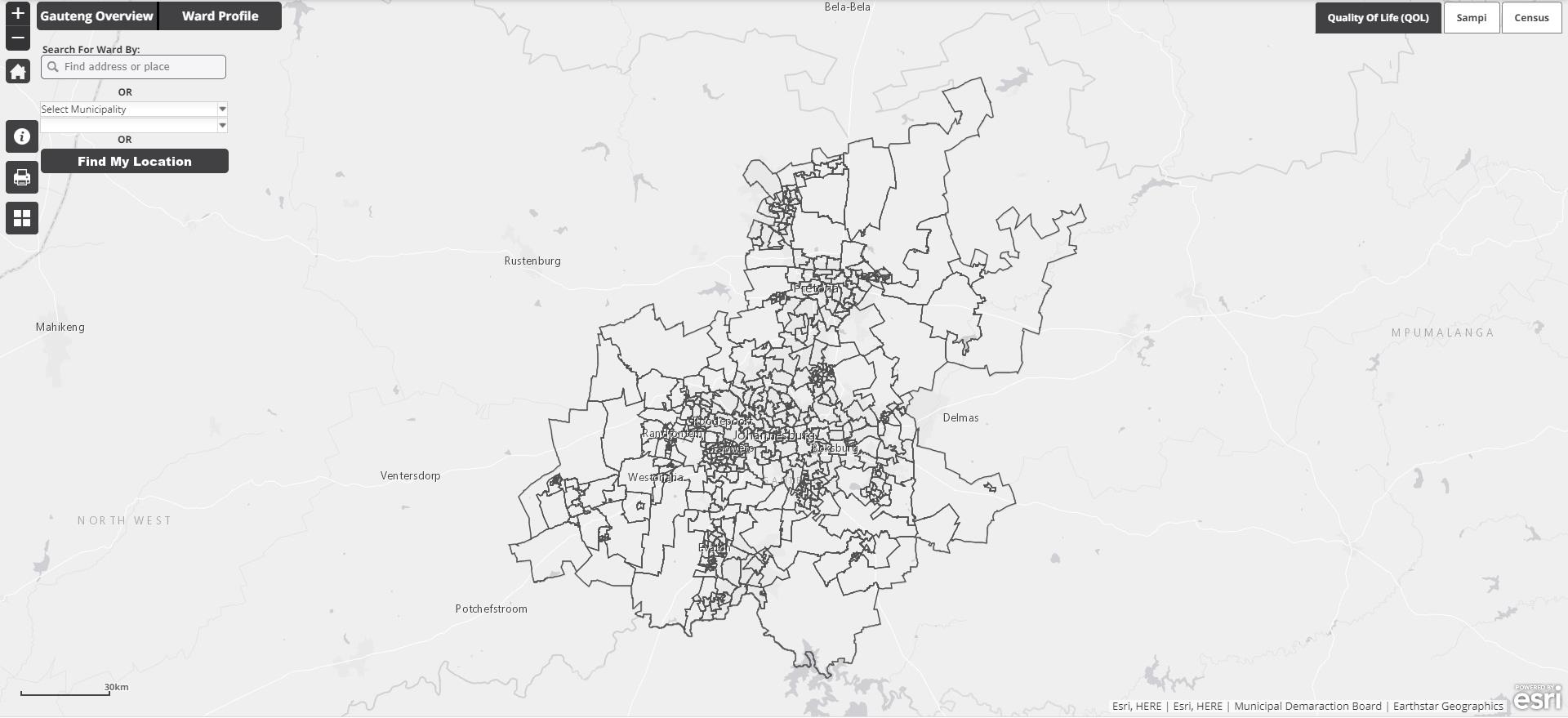



Fig. COVID-19 index of risk maps by Gauteng City-Region Observatory (GCRO)
Programme objectives will be realized with strong North South/ South-South regional, national and local partnerships, cooperation and active community engagement. The coalition will improve and strengthen access to, share ideas and foster science and appropriate innovation technologies. The partnership’s model will unlock the potential and possibilities for people at grass roots to prosper by offering hope and support, building capacity and mobilising human and financial resources for least developed communities. In addition to in-country face-to-face meetings, partners are technology-smart to ensure effective management and communication to allow continuous collection and sharing of data and progress. We will strengthen intra-, inter-organizational collaboration through knowledge sharing, database management and monitoring progress through a central dashboard.

Fig. South African National Space Agency (SANSA) disaster management toolsfor SANSA flood risk.
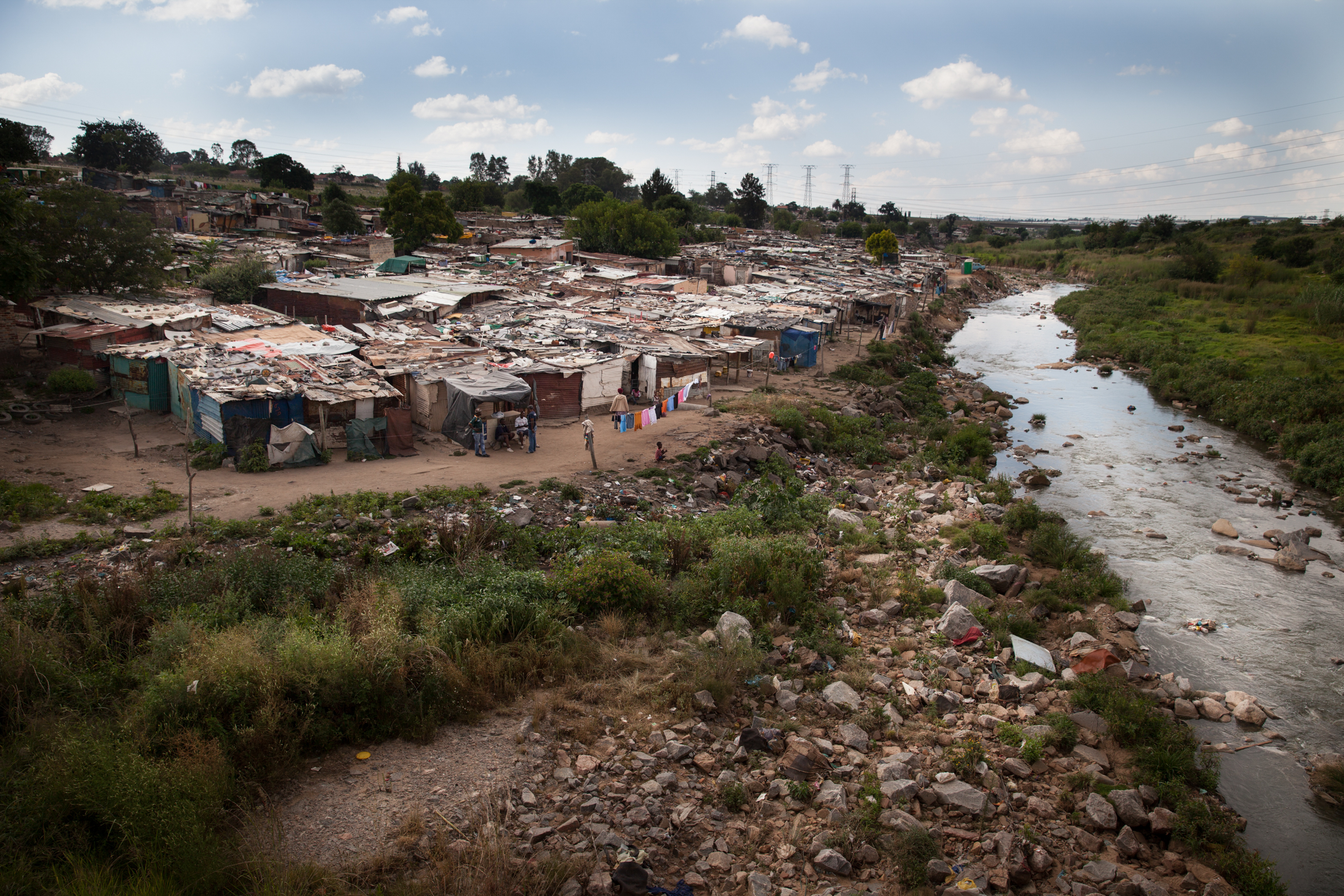
Fig. Juskei River settlement vulnerable to flooding.
Country and regional political economy and governance has an impact on the delivery of our programmes regarding service, responsiveness by citizens’ needs, corruptions and leakages. Our assessments and audits at local, national and regional levels will include social, ecological, economic and political status. of the three countries. The assessments will be carried out using the structured domain analysis reviewing policy documents, as well as economic, climatic, hydrological and environmental data allowing for a spatial development framework with baseline and benchmarking.
The programme will leverage regional and continental programmes such as African Continental Free Trade Area (AfCFTA), SACU and SADC to build an interconnected regional strategy that is circular. AfCFTA is becoming more relevant and should be seen in conjunction with SADC / SACU. In addition, the audit will include reviewing gender policy and gender initiatives some of which has already been done by the three Southern African countries.
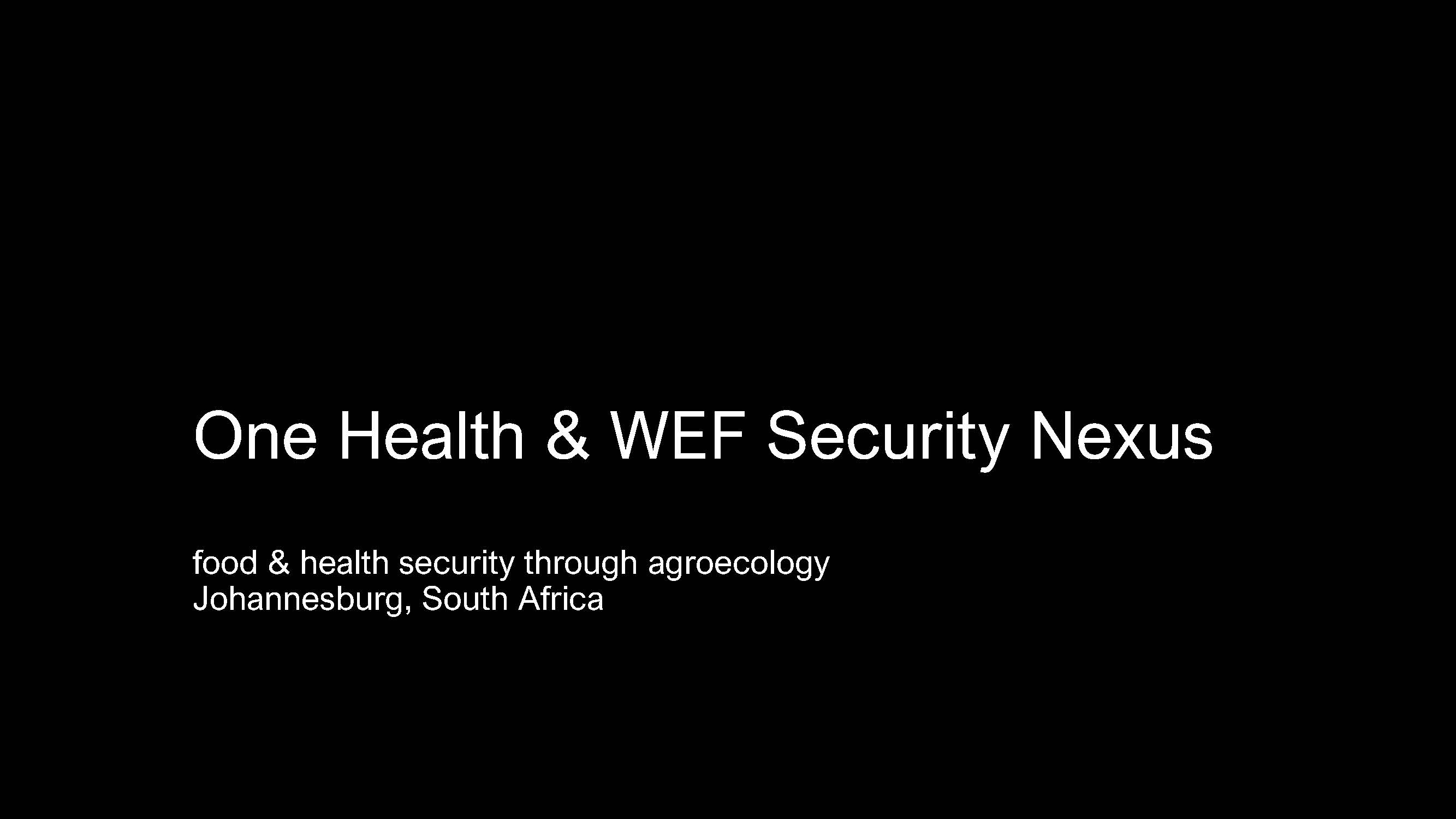


Women make up more than half of the population of the three project countries combined. All our project partners adhere to the Gender Integration Plan objectives and framework. The framework includes the need to build a common understanding of the fundamental role that gender plays in projects; to provide guidance on integrating gender into work opportunities within the interventions of the project to accomplish gender transformation by offering basic principles, providing definitions, introducing gender analysis and research. The transformative Gender Integration Plan fosters critical examination of gender norms and strengthens equitable gender norms.
We will review the progress of monitoring and evaluation according to the SDGs´ indicators with a predefined theory of change. Baseline data will be collected at the outset to measure impact, outputs and outcomes including beneficiary profiling, environment, health, and socio-economic data, skill sets as well as organic produce. Knowledge Management is a critical component of the programme which will document processes for learning and disseminate best practice at a regional level. We will build the capacity and leadership and management of both employed staff (internal) and beneficiaries (external). An essential aspect of the project will be to select masters, doctoral and post-doctoral candidates. They will play key roles in the M&E, the findings of which could influence policy and strategic interventions as well as contributing to relevant literature through articles and attendance of conferences. Our sustainability plan will ensure continuity of community interventions as well as our goal of strengthening academia, government and civil society.
UJ has been ranked fifth in the world for the Reduced Inequalities and SDG and 43rd in the world for the Gender Equality SDG University Impact Ranking3. These results are testament to the sterling work that the University is doing to reduce all forms of inequality and inequity across race, gender, disability, class. Many of the team members and departments at UJ who contributed to this ranking are included in this proposal.
The EU Networking for Academic Excellence on Agriculture and Food Security project objectives which included an online and multi-disciplinary learning platform approach to food security and a gender component were met. The solid partnerships and collegial relationships which were established have been extended into the current proposal.
Award-winning Siyakhana Growth and Development has also been working in collaboration with AEDI, the Rootzone, in bringing about change at local national and regional level regarding promoting health, transforming communities and enhancing environments through research, advocacy, training and food gardens. This strong partnership has resulted in further coalitions including governmental departments and agencies.
AEDI, an IECSP team member, together with University of York and the University of Cape Town have established ongoing research projects in Namibian urban and rural settings; Urban Ecolution (climate adaptation for water-related ecological infrastructure in peri-urban areas) and Peri Urban Resilient Ecosystems (Catalysing participation through innovation to strengthen rural-urban climate resilient futures in Namibia). They have been working with UNAM, Namibian Housing Action Group/ Shack Dwellers Federation of Namibia, and Farm Okukuna since 2017 and have successfully implemented programmes supported by IDRC, UNECA and GCRF. Nottingham Trent University is a leading global institution in the field of sustainable food systems and has recently started a project with LUANAR related to Moringa which is aligned with these projects objectives.
3 https://www.uj.ac.za/newandevents/Pages/UJ-ranked-fifth-globally-in-new-THE-University-Impact-Rankings.aspx


Model typologies designed for specific interventions are scalable, temporary structures, and circular by design.
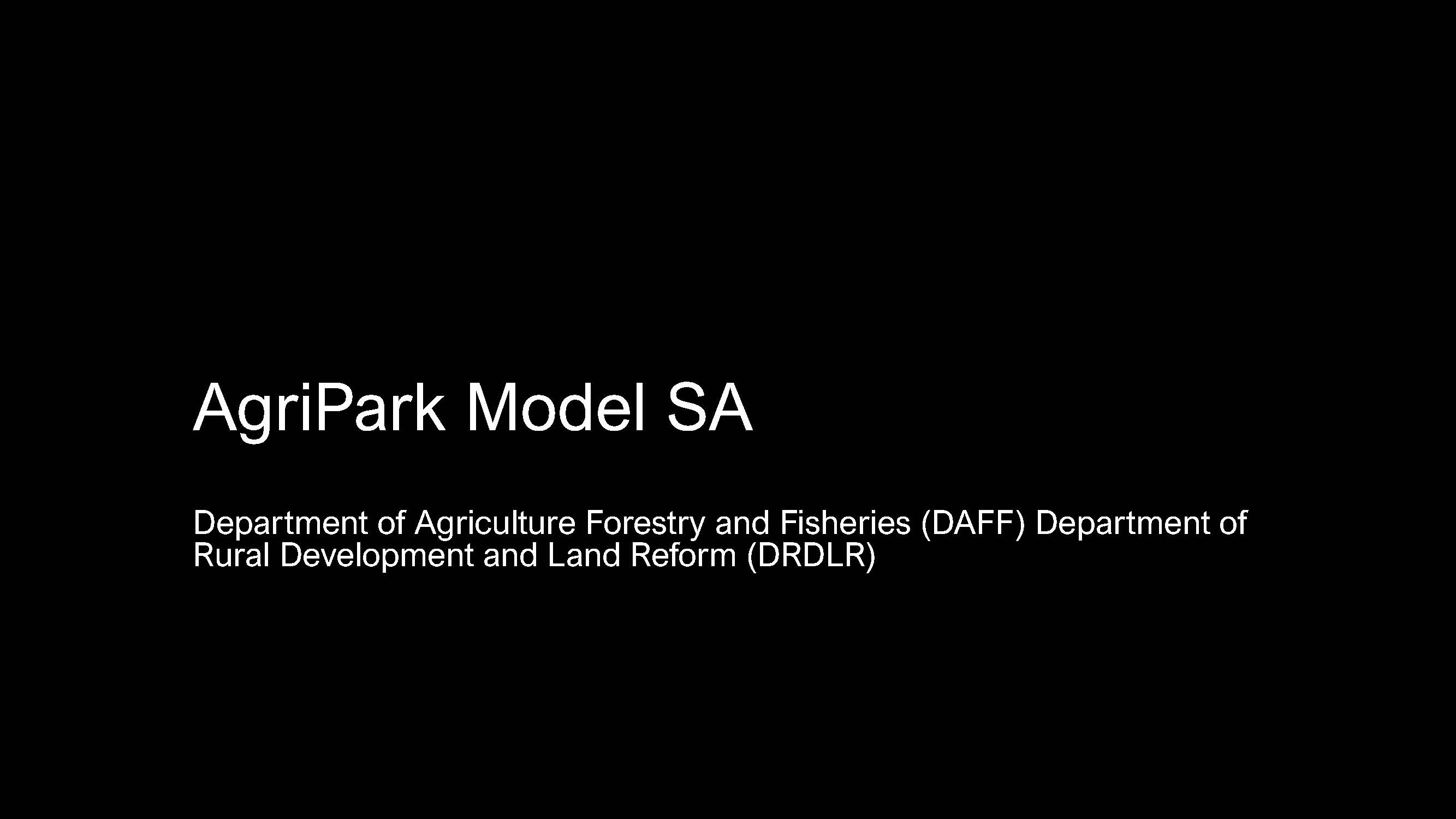

A 3N model diagram for agri-incubators.


Fig. Ekurhuleni Map
Overlaying the 3N model over the Eastern Gateway of central Johannesburg:
The Park is uniquely positioned to become a central node in the Eastern Gateway of central Johannesburg. With its critical mass, accessibility and multi-modality, it can be developed into a world-class urban space that connects Hillbrow, Central Johannesburg and the Station Precinct while maintaining a natural link to the environs.The 3N model is based on restoring and rehabilitating inner-city ecosystems, developing urban enterprises and utilising the Park advance city resilience while maintaining a park's heritage and public space integrity. The Jukskei River pedestrian route connects Bezuidenhout Park to the Eastern Gateway, University of Johannesburg’s Doornfontein campus and Ellis Park.By integrating nature into urban design through an array of program activities along the Jukskei River, a unique destination is created that connects Bezuidenhout Park to the Eastern Gateway and Ellis Park using a pedestrian route that runs along its banks.
Reference the Eastern Cape Schools Project


Klip River, Soweto


Jukskei River, Alexandra




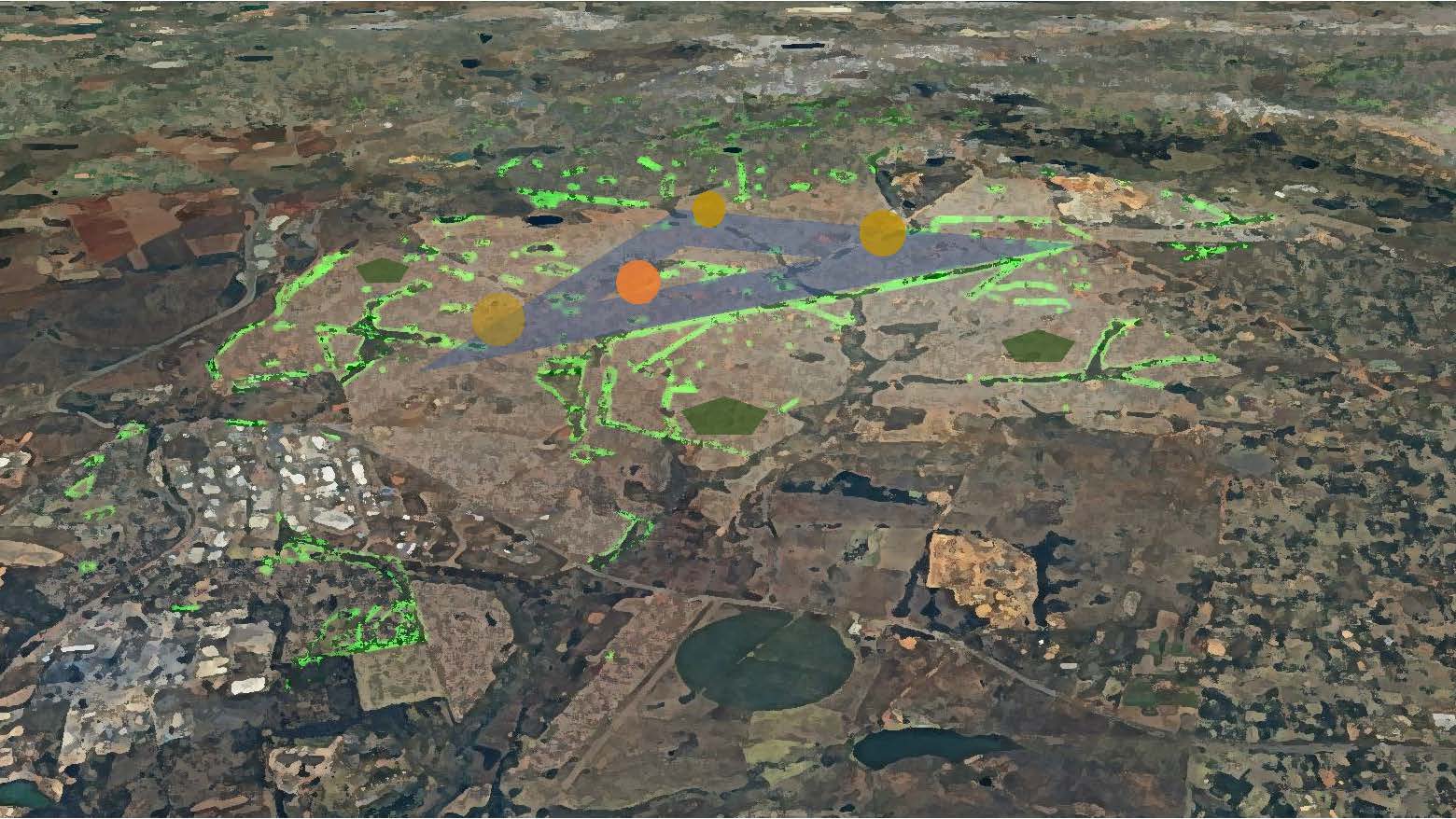
Kaalspruit River, Tembisa

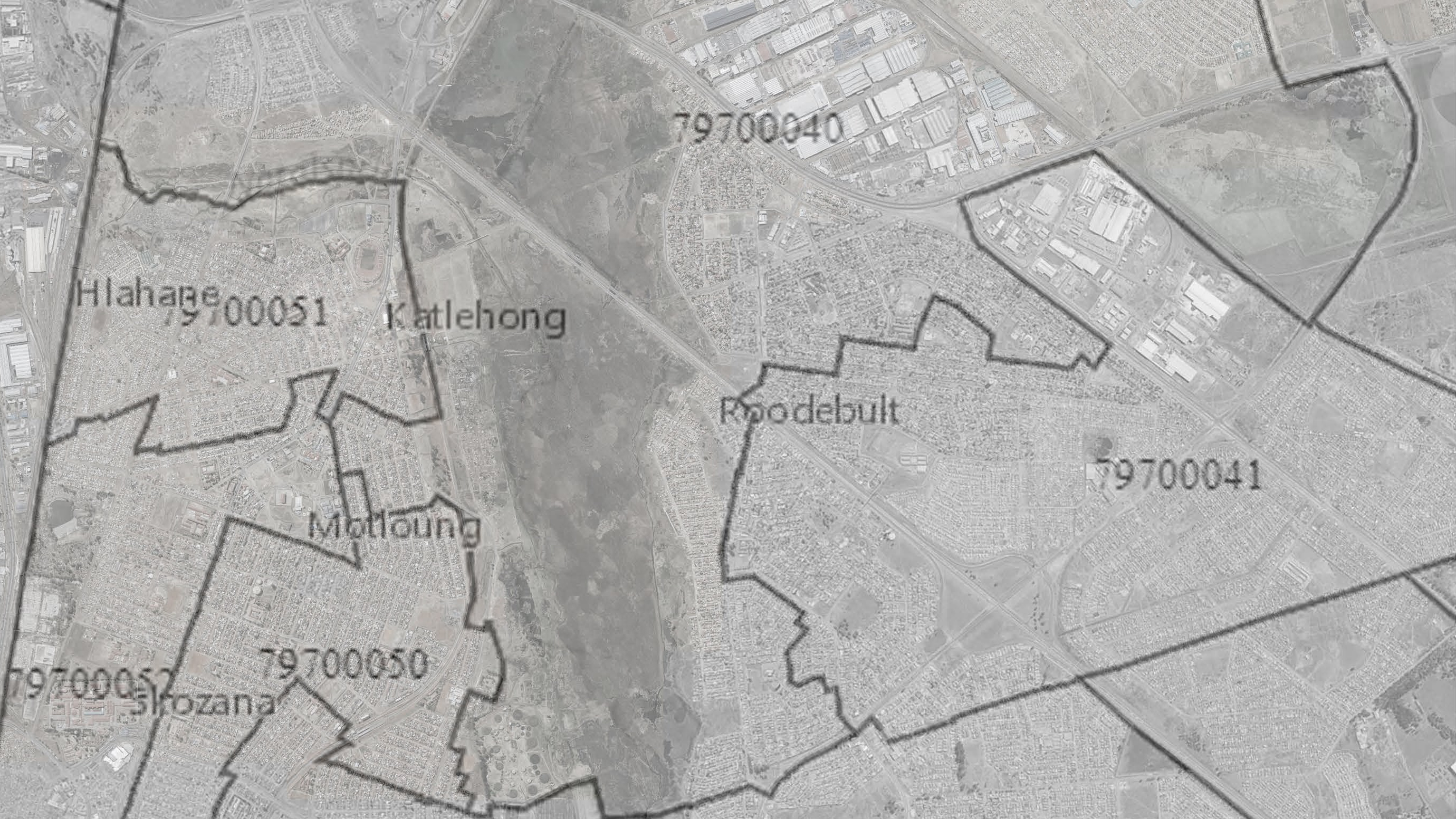
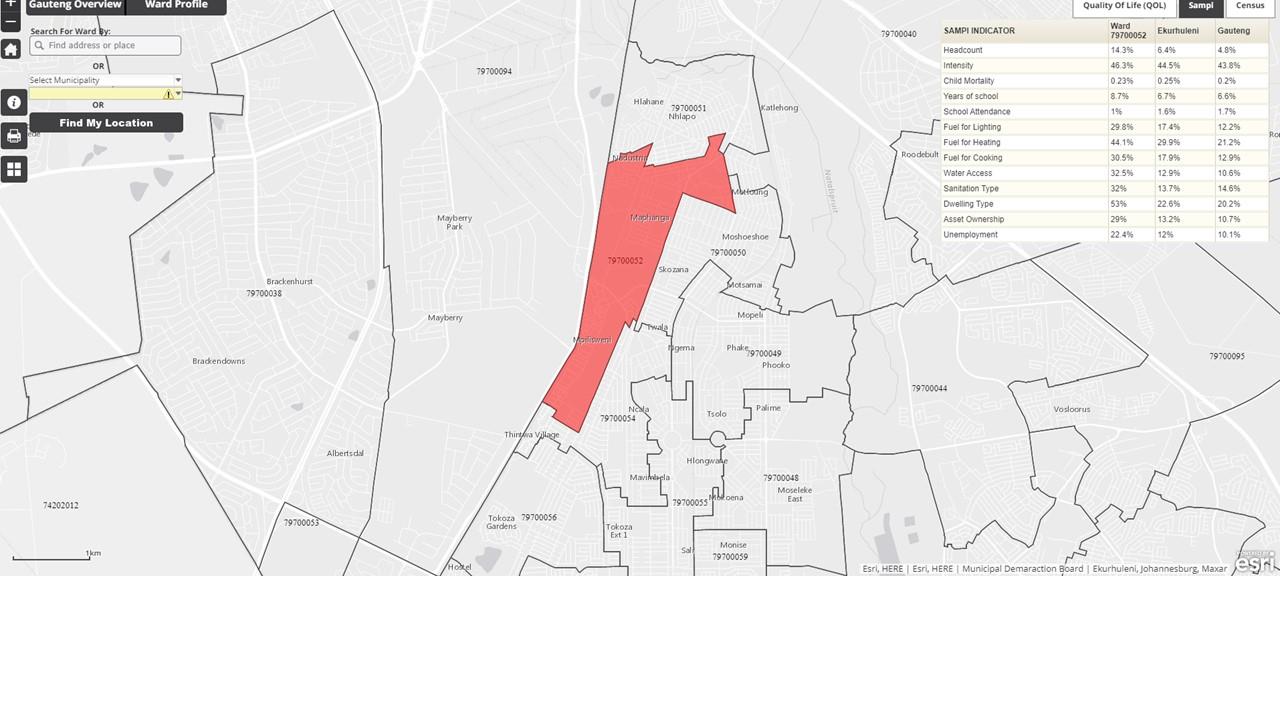



Fig. 1, Natalspruit River, Katlehong
Fig. 2, Katlehong, Hlahane, Motloung, and Skozana wards governed by the Ekurhuleni Metropolitan Municipality.

Fig. A spatial diagram of the 3N model knits strategic interventions across three wards completing a localised value chain for improved water, food security and community health.

Elsburgspruit


Natalspruit Metrorail adjacent to the Natalspruit river and Hlahane ward in Erkuhaleni is the selected location for the 3N Green Station.


3N Garden Village

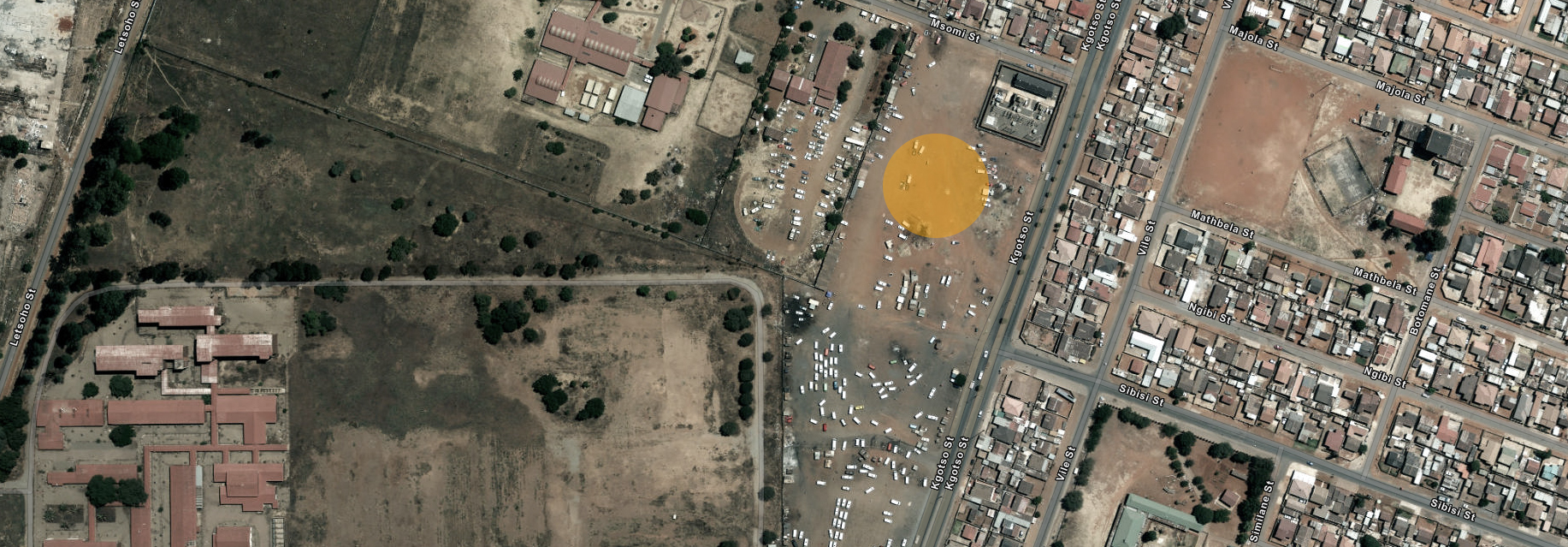
Katlehong Peoples Taxi /
Association Natalspruit Hospital Taxi Rank, Kgotso Str /Twala SS Electrical substation
“Nourish, Nurture, and network”, guides the application of interventions in Malawi, Namibia and South
Africa (figure 1), as follows:
-
NOURISH - Component 1, Agribusiness: Conduct a baseline assessment to ensure the 3N framework responds to developmental priorities, establishing a social license aligned with community needs. Establish Siyakhana Food Garden Incubators (SFGI), satellite peri-urban, urban and rural climate-smart agroecological training incubators supporting small to medium enterprise development. Set up Agri-Health Market Stations (AMS) low cost, temporary structures located on public equity sites for fresh produce market access. Create Integrated Food and Health Support Units (IFHSU), attached to schools or community centres with SETA health and educational training.
-
NOURISH - Component 2, Gender integration: Implement a Gender Integration Plan, working together with regional, governmental, civic organizations and residents, to address embedded cultural, social and organizational discrimination against women to ensure active participation and representation.
-
NURTURE - Component 1, Restoration and stewardship: Establish a rural and urban reforestation programme to rehabilitate ecological infrastructure along riparian corridors to enhance aquifer, river and reservoir renewability and filtration and flood regulation. Support integrated water management of small to medium enterprises. Distribute energy efficient cook stoves for biodiversity, air quality, and carbon benefits.
-
NURTURE - Component 2, Climate proof: Adapt to climate change by climate-proofing an agricultural incubator and scale cost-effective, drought-adaptive land management action land and ecosystem services. Build adaptive capacity by closing the agri-loop cycle by promoting fresh produce and an Integrated Farm Management System.
-
NETWORK – Component 1, Engagement and education: Network within and amongst the institutions, organisations, civic society and community will nurture relationships with mutually beneficial outcomes. The network will facilitate access to opportunities, plus address inevitable challenges by assisting and or connecting with other stakeholders to create cohesive partnerships and strengthen coalitions. Networking technology will be at the heart of connecting people and organisations of the project as well as devices and local networks with the global, regional and national providers. The network technology will assist with planning, designing, building, managing, and supporting all aspects of our work.
-
NETWORK – Component 2, Health: Strengthen linkages between informal community care, self- care and formal primary healthcare services through AMS and IFHSU. Mitigate disease risk factors and maintain social acceptance for preventative hygiene. Support food and nutrition security scaling conservation agriculture.
- Each of these interventions have been designed specifically to reach the targeted number of beneficiaries. We will focus on population centres which are vulnerable to food insecurity, climate variability and change and poverty, where we have established relationships with local partners. To ensure the buy in of local authorities and municipalities and increase institutionalization, we will work with schools in urban centres and managers of open public spaces.





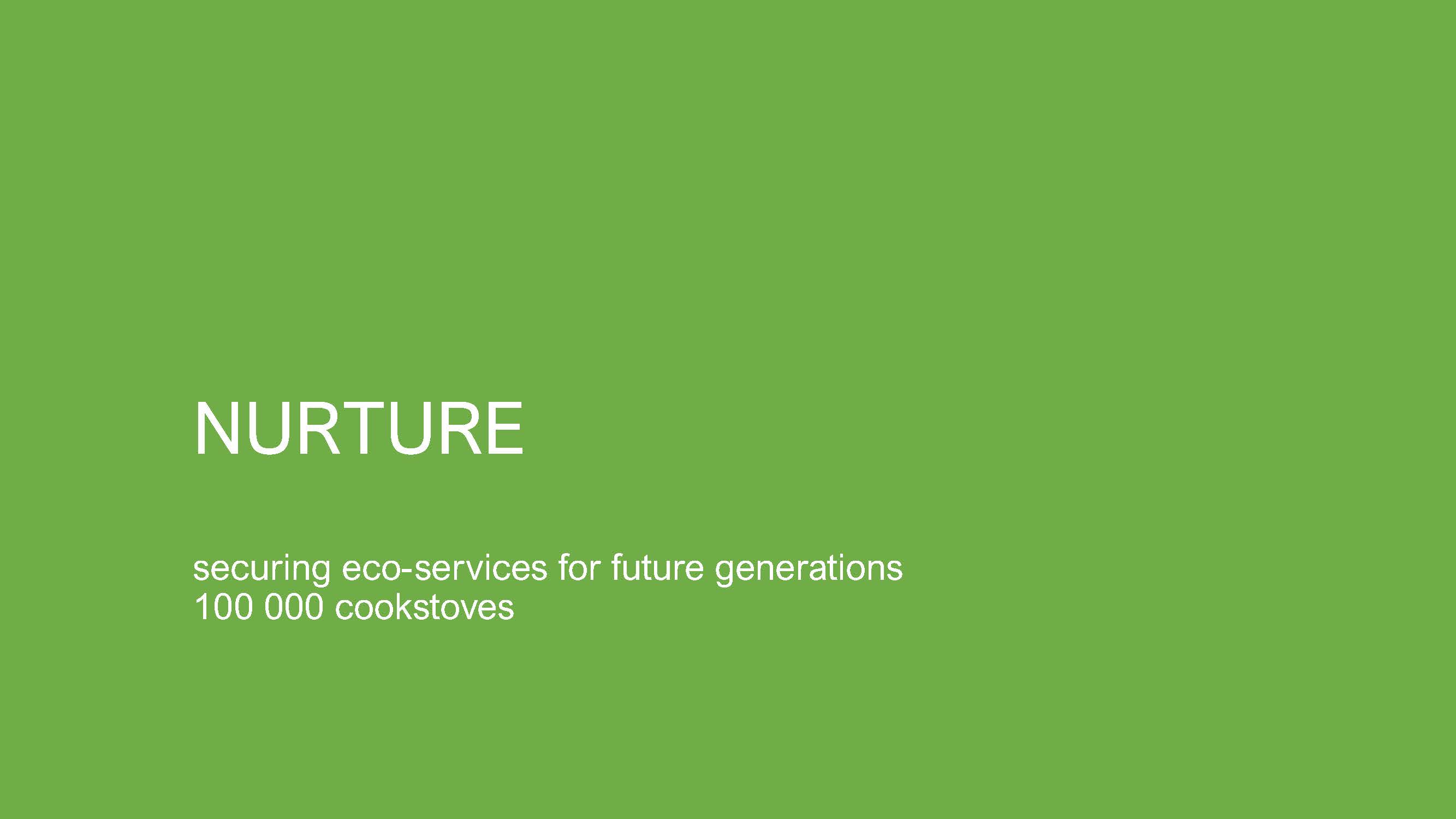


Nourish, Nurture, Network (3N): A systemic approach using agroecology for resilient futures in marginalised communities in Southern Africa
Co-authored Dr Jessica Thorn, Dieter Brandt, Michael Rudolph, and University of Johannesburg.
TRANSITION DESIGN
AEDI STUDIO BERLIN, JOHANNESBURG.
AEDI STUDIO BERLIN, JOHANNESBURG.
